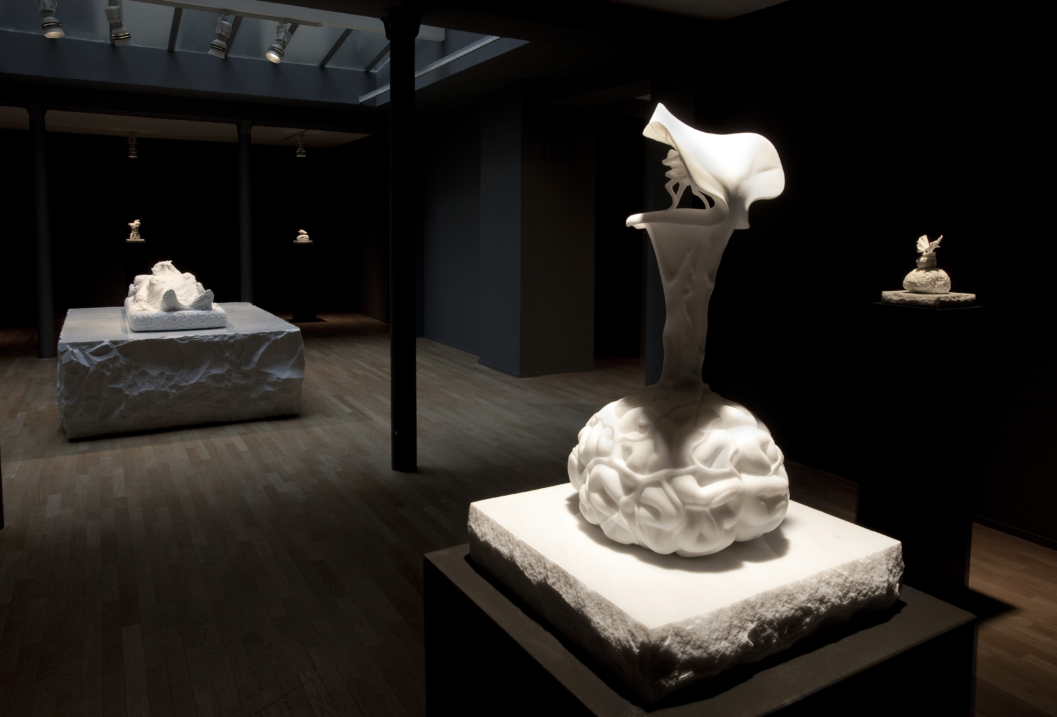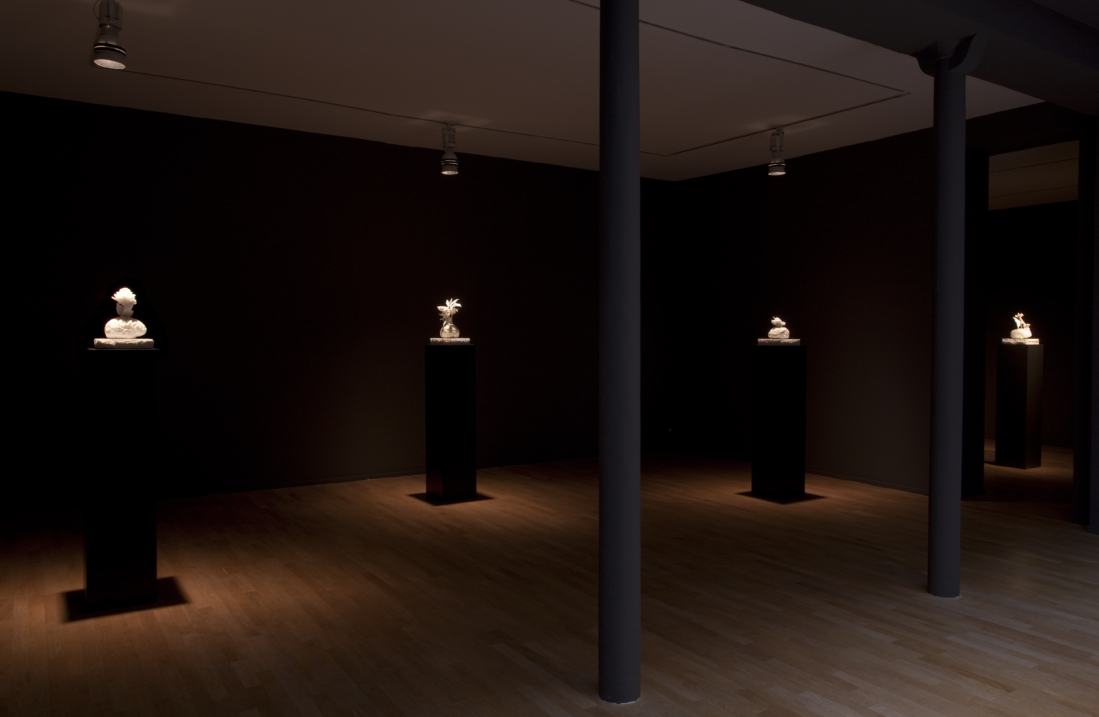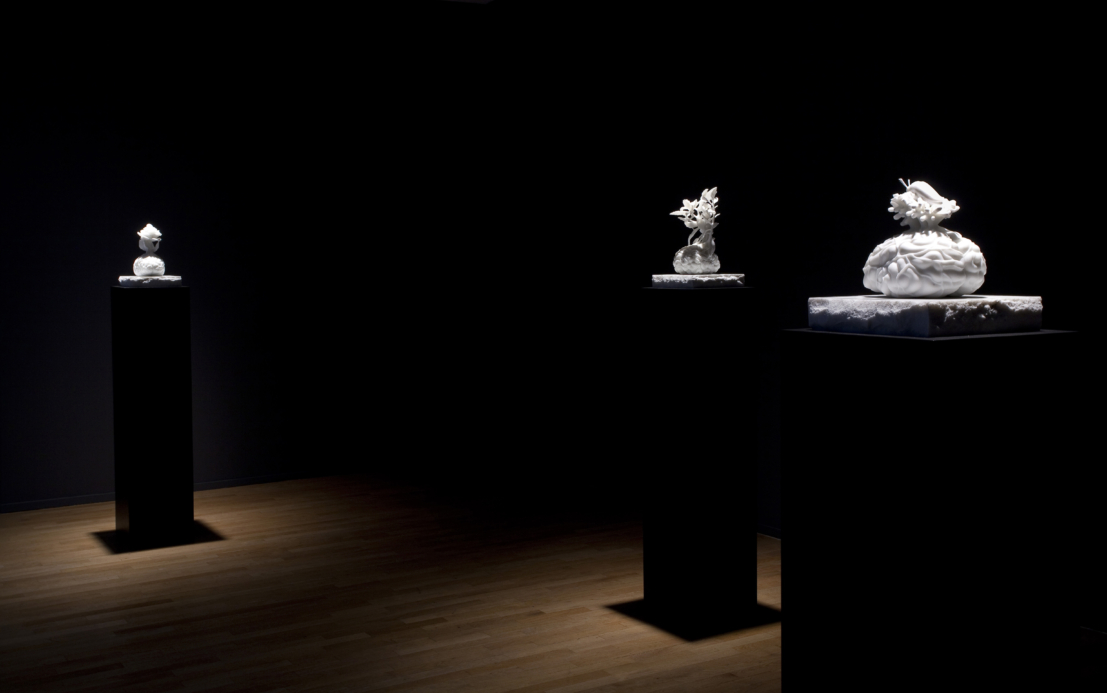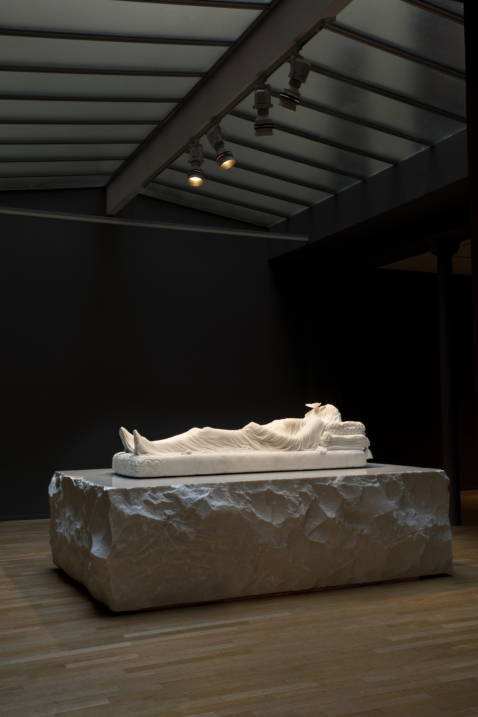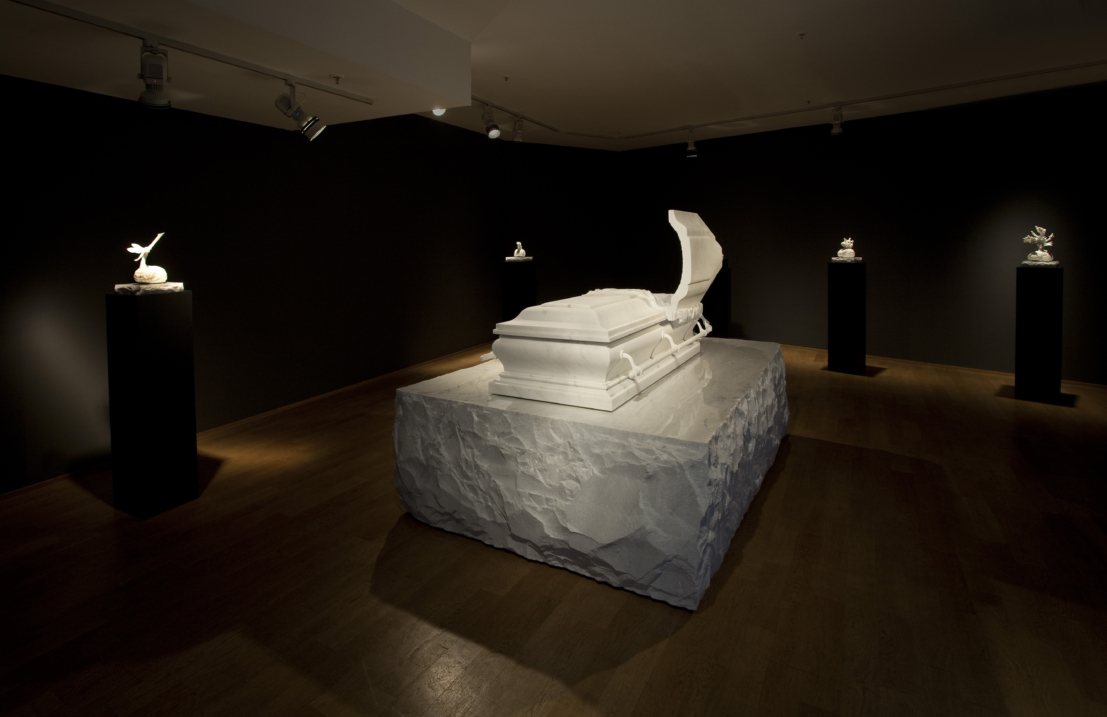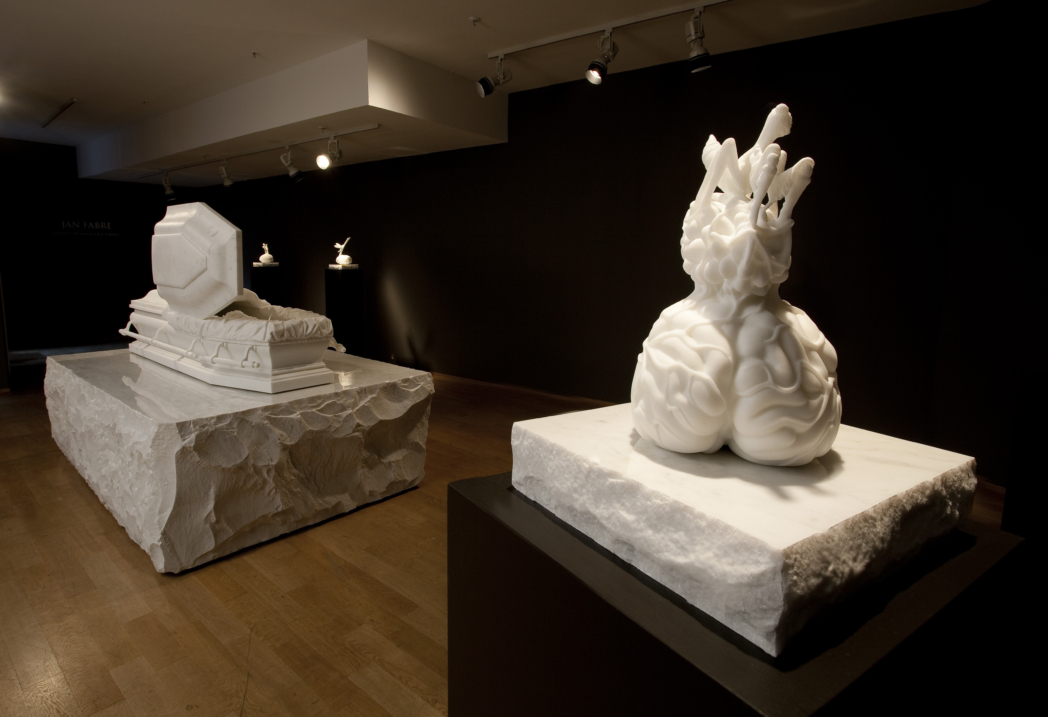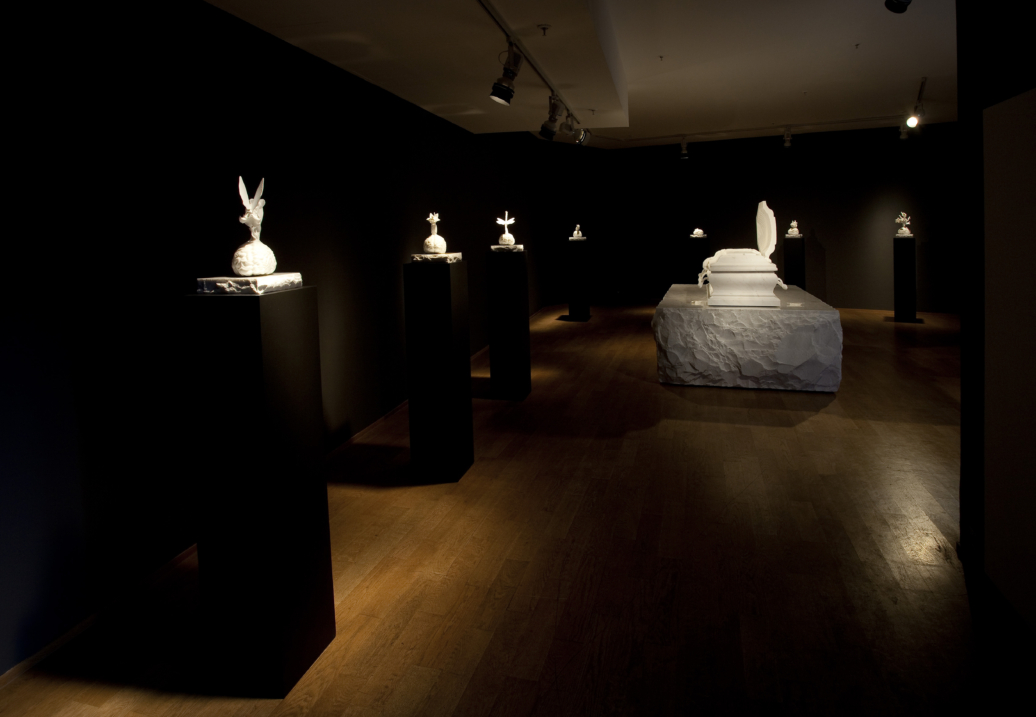
Jan Fabre
Gisants …
Deux ans après le succès de Piètas à la Biennale de Venise, Jan Fabre transforme la Galerie Templon en chambre sacrée.
Les deux espaces de la galerie accueillent un couple de gisants en marbre de Carrare accompagné de sculptures de cerveaux habités d’insectes et de plantes. Après s’être emparé du thème de la pièta, Jan Fabre se confronte à la tradition séculaire de la mise en scène de la mort.
L’artiste rend hommage à deux personnalités dont les découvertes ont éclairé le siècle passé : Elizabeth Caroline Crosby (1918-1983), neuro-anatomiste américaine et Konrad Zacharias Lorenz (1903-1989), biologiste et zoologiste autrichien. Fervent défenseur du dialogue entre les champs de la connaissance, Jan Fabre a déjà travaillé sur les neurosciences, notamment avec le film Is the brain the most sexy part of the body ? (2007)
Si les sculptures funéraires invitent à la méditation sur la vanité de l’existence, la mise en scène de Jan Fabre questionne les liens de l’homme avec la nature et sa propre nature. Le cerveau, siège de l’intelligence et de la créativité, apparaît comme un protecteur, un guide possible dans l’au-delà. Les insectes – papillons, abeilles, araignées, scarabées – adoptent la fonction traditionnellement dévolues aux chiens ou aux lions des sépultures royales, posés aux pieds des gisants : celle de la résurrection.
Né en 1958 à Anvers, Jan Fabre est reconnu depuis la fin des années 1990 pour son œuvre d’homme de théâtre, de plasticien et d’auteur. Il s’intéresse depuis 1976 à l’art de la performance, et se lance en 1980 dans la mise en scène et la chorégraphie. Depuis, il a réalisé une trentaine de pièces mêlant danse et théâtre, dont la radicalité déclenche régulièrement la polémique, comme Je suis sang (2000) ou L’Orgie de la Tolérance (2009). En mai 2013 il présentera au Théâtre de la Ville à Paris The Tragedy of a Friendship consacré à la relation entre Nietzsche et Wagner.
Dessinateur invétéré, Jan Fabre crée des sculptures, modèles et installations qui font vivre ses grands thèmes de prédilection tels que la métamorphose ou l’artiste comme guerrier de la beauté. Parmi ses expositions personnelles les plus marquantes ces dernières années on peut citer celle du Museum voor Hedendaagse Kunst à Anvers en 2006 et du Musée du Louvre en 2008. Récemment, l’artiste a fait l’objet d’expositions au Kröller-Müller Museum d’Otterlo au Pays-Bas (Hortus/Corpus, 2011), au Kunsthistorisches Museum de Vienne et au Musée d’art moderne de St Etienne (Jan Fabre. Les années de l’heure bleue, 1986 – 1991, 2011).
Le catalogue bilingue anglais/français de l’exposition, avec des textes de Jo Coucke, Marie Darrieussecq, Vincent Huguet et Bernard Marcelis, sera disponible à la mi-février 2013.
The artist

Jan Fabre was born in 1958 in Antwerp where he lives and works. He has worked in the theatre and is an internationally renowned choreographer. Over the last twenty years he has also developed a body of art work based on a variety of materials, including blood, ball-point pen ink, beetle wings, bones, stuffed animals and marble. Jan Fabre is an inveterate draughtsman, creating sculptures and installations that explore topics such as metamorphosis, the dialogue between art and science, humankind’s relationship to nature and the artist as a warrior of beauty.
